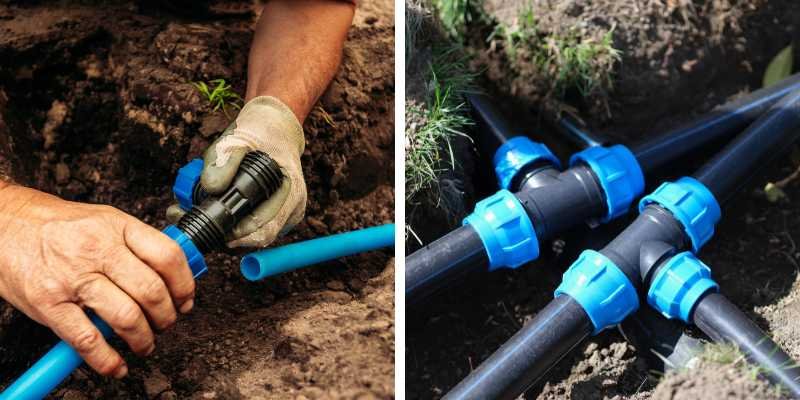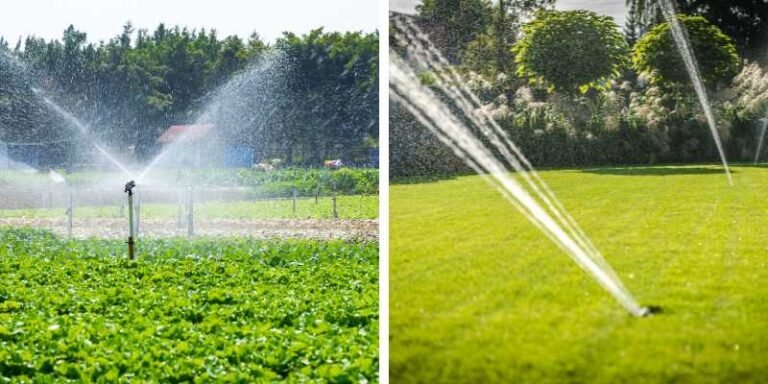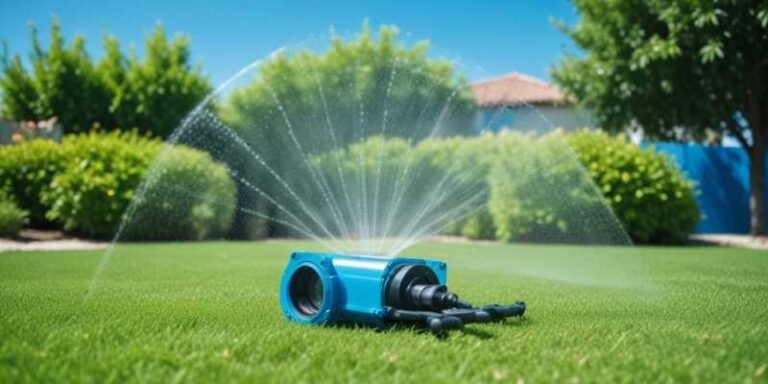Subsurface Drip Irrigation: Pros and Cons
Subsurface drip irrigation (SDI) is a modern irrigation technique that involves delivering water directly to the root zone of plants through buried tubes or pipes. Unlike traditional surface irrigation methods, SDI minimizes water loss due to evaporation and runoff, making it an efficient option for water conservation in agricultural and landscaping settings. In today’s world where water scarcity is a growing concern, adopting efficient irrigation methods like SDI is crucial for sustainable water management.
Importance of efficient irrigation methods
Efficient irrigation methods play a crucial role in sustainable water management, agricultural productivity, and environmental conservation. As global water resources become increasingly stressed due to population growth, climate change, and competing demands from various sectors, the adoption of efficient irrigation practices becomes paramount to ensure the availability of water for future generations.
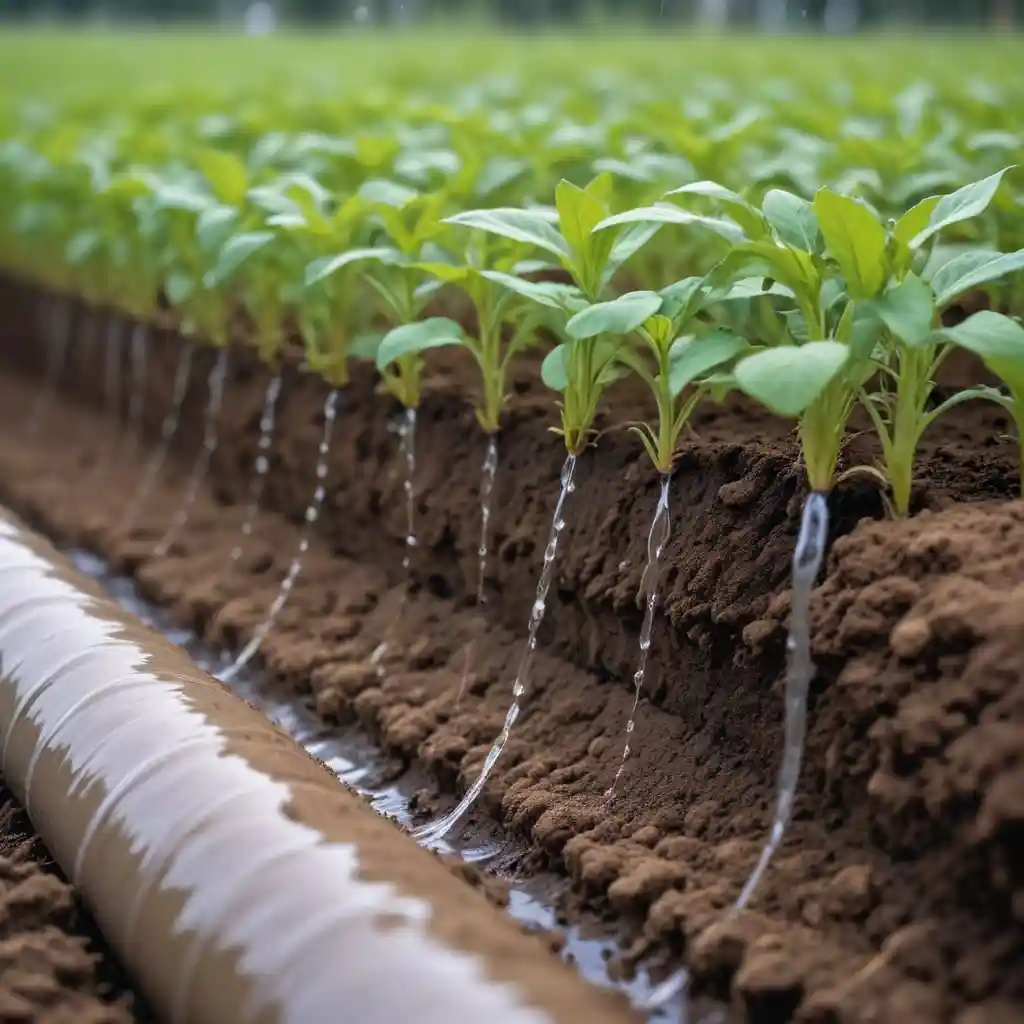
Water resource conservation
Efficient irrigation methods, such as subsurface drip irrigation (SDI), help conserve water by minimizing wastage and optimizing water use efficiency. Unlike traditional irrigation techniques that often result in significant water loss due to evaporation, runoff, and inefficient distribution, SDI delivers water directly to the root zone of plants, reducing losses and maximizing plant uptake. By conserving water resources, efficient irrigation methods help mitigate the impacts of water scarcity, alleviate pressure on freshwater ecosystems, and ensure sustainable water supply for agriculture, urban communities, and ecosystems.
Increased agricultural productivity
Efficient irrigation methods contribute to increased agricultural productivity by ensuring optimal water supply and nutrient uptake for crops. By delivering water directly to the root zone, SDI promotes healthier plant growth, reduces stress from drought or waterlogging, and enhances nutrient absorption. This results in improved crop yields, better quality produce, and enhanced farm profitability. Moreover, efficient irrigation practices enable farmers to produce more food using fewer inputs, such as water, energy, and fertilizers, leading to resource savings and improved resilience to climate variability.
Environmental sustainability
Efficient irrigation methods play a crucial role in promoting environmental sustainability by minimizing the negative impacts of irrigation on soil, water, and ecosystems. Traditional irrigation practices, such as flood or overhead sprinkler irrigation, can lead to soil erosion, salinization, waterlogging, and pollution from agrochemical runoff. In contrast, SDI reduces soil erosion by maintaining soil structure and moisture levels, prevents nutrient leaching through precise water application, and minimizes the use of fertilizers and pesticides. This helps protect soil health, preserve water quality, and maintain biodiversity in agricultural landscapes.
Comparison of Water Usage between Traditional Irrigation and Efficient Irrigation Methods
| Aspect | Traditional Irrigation | Efficient Irrigation Methods |
|---|---|---|
| Water loss | Significant loss due to evaporation, runoff, and inefficient distribution. | Minimized loss through targeted water delivery, reducing evaporation and runoff. |
| Plant uptake efficiency | Variable efficiency, with some areas overwatered and others underwatered. | Optimal efficiency, with direct water supply to the root zone, maximizing plant uptake. |
| Environmental impact | Soil erosion, water pollution, and nutrient leaching from agrochemical runoff. | Reduced environmental impact, with less soil disturbance, nutrient leaching, and pollution. |
| Resource conservation | High water consumption and energy usage, leading to resource depletion and increased costs. | Water and energy savings, reduced input requirements, and improved resource efficiency. |
This comparison matrix highlights the advantages of efficient irrigation methods over traditional irrigation practices in terms of water usage, plant uptake efficiency, environmental impact, and resource conservation. Efficient irrigation methods like SDI offer a sustainable solution to address the challenges of water scarcity, agricultural productivity, and environmental sustainability, ensuring the long-term viability of food production systems and water resources.
How does Subsurface Irrigation works?
Subsurface drip irrigation (SDI) operates on the principle of delivering water directly to the root zone of plants through a network of buried tubes or pipes, known as drip lines or emitters. This irrigation method offers a precise and efficient way to supply water and nutrients to plants, minimizing water loss and maximizing plant health.

The key components of an SDI system include:
- Drip lines or pipes: These are the main conduits through which water is delivered to the root zone. Typically made of durable materials like polyethylene, drip lines are buried beneath the soil surface at a shallow depth, allowing water to seep out through emitters or perforations.
- Emitters: Emitters are small devices installed along the drip lines at regular intervals, usually spaced a few feet apart. These emitters regulate the flow of water, ensuring uniform distribution to each plant’s root zone. Different types of emitters are available, including pressure-compensating emitters, which maintain a consistent flow rate regardless of variations in pressure.
- Water source and delivery system: An SDI system is connected to a water source, such as a well, pump, or municipal water supply. Water is delivered to the drip lines through a series of pipes, valves, and filters, which control the flow rate, pressure, and quality of the irrigation water.
- Control system: Modern SDI systems are often equipped with automated controls, including timers and sensors, to regulate irrigation scheduling based on factors like soil moisture levels, weather conditions, and plant water requirements. This automation helps optimize water usage and minimize manual intervention.
The operation of an SDI system follows a systematic process:
- Water supply: The irrigation system draws water from the source, whether it’s a well, reservoir, or municipal supply. The water is then pumped through the distribution system to reach the drip lines buried beneath the soil.
- Distribution to emitters: Once the water reaches the drip lines, it flows through the emitters at a controlled rate. The spacing and placement of emitters ensure uniform coverage across the irrigated area, delivering water directly to the root zones of plants.
- Infiltration and absorption: As water is released from the emitters, it infiltrates the soil and moves downward through capillary action, reaching the root zone where it’s absorbed by plant roots. This targeted delivery minimizes water loss due to evaporation and runoff, maximizing irrigation efficiency.
- Monitoring and adjustment: Throughout the irrigation cycle, the system’s control components monitor key parameters such as soil moisture levels, flow rates, and system pressure. Based on this data, the control system adjusts irrigation scheduling and water delivery to optimize plant growth and water conservation.
In summary, subsurface drip irrigation offers a sophisticated yet straightforward approach to irrigating plants by delivering water directly to their root zones. By minimizing water loss and ensuring efficient nutrient uptake, SDI helps promote healthy plant growth while conserving water resources for sustainable agriculture and landscaping practices.
Components of a Subsurface Drip Irrigation System
| Component | Description |
|---|---|
| Drip lines or pipes | Main conduits for water delivery, buried beneath the soil surface |
| Emitters | Devices installed along drip lines to regulate water flow and distribution |
| Water source | Supply of water for the irrigation system, such as wells, pumps, or municipal water supply |
| Control system | Automated controls, including timers and sensors, for regulating irrigation scheduling |
| Distribution system | Pipes, valves, and filters for delivering water from the source to the drip lines |
This matrix provides an overview of the key components that make up a subsurface drip irrigation system and their respective roles in delivering water efficiently to plant root zones.
Pros of Subsurface Drip Irrigation
- Improved water efficiency: By delivering water directly to the root zone, SDI reduces water loss due to evaporation and runoff, maximizing irrigation efficiency and minimizing water wastage.
- Reduced soil erosion: Since water is applied below the soil surface, SDI helps prevent soil erosion caused by surface runoff, preserving soil structure and fertility.
- Enhanced plant growth: The precise delivery of water and nutrients to plant roots promotes healthier growth, leading to increased crop yields and improved quality of produce.
- Suitable for perennial crops: SDI is particularly well-suited for perennial crops like orchards and vineyards, providing consistent moisture levels essential for long-term plant health and productivity.
Cons of Subsurface Drip Irrigation
- Initial investment costs: The installation of SDI systems involves upfront costs for equipment, materials, and labor, which can be higher compared to traditional irrigation methods.
- Maintenance requirements: While SDI systems are generally low-maintenance, regular checks for clogs, leaks, and system malfunctions are necessary to ensure optimal performance.
- Challenges with soil type compatibility: Certain soil types, such as heavy clay or compacted soils, may pose challenges for effective water distribution in SDI systems, requiring additional soil amendments or system adjustments for optimal results.
Water Savings with Subsurface Drip Irrigation
Subsurface drip irrigation (SDI) systems offer significant water savings compared to traditional irrigation methods by delivering water directly to the root zone of plants with minimal loss due to evaporation and runoff. This targeted approach maximizes irrigation efficiency and ensures that water is used more effectively, leading to substantial water conservation benefits.
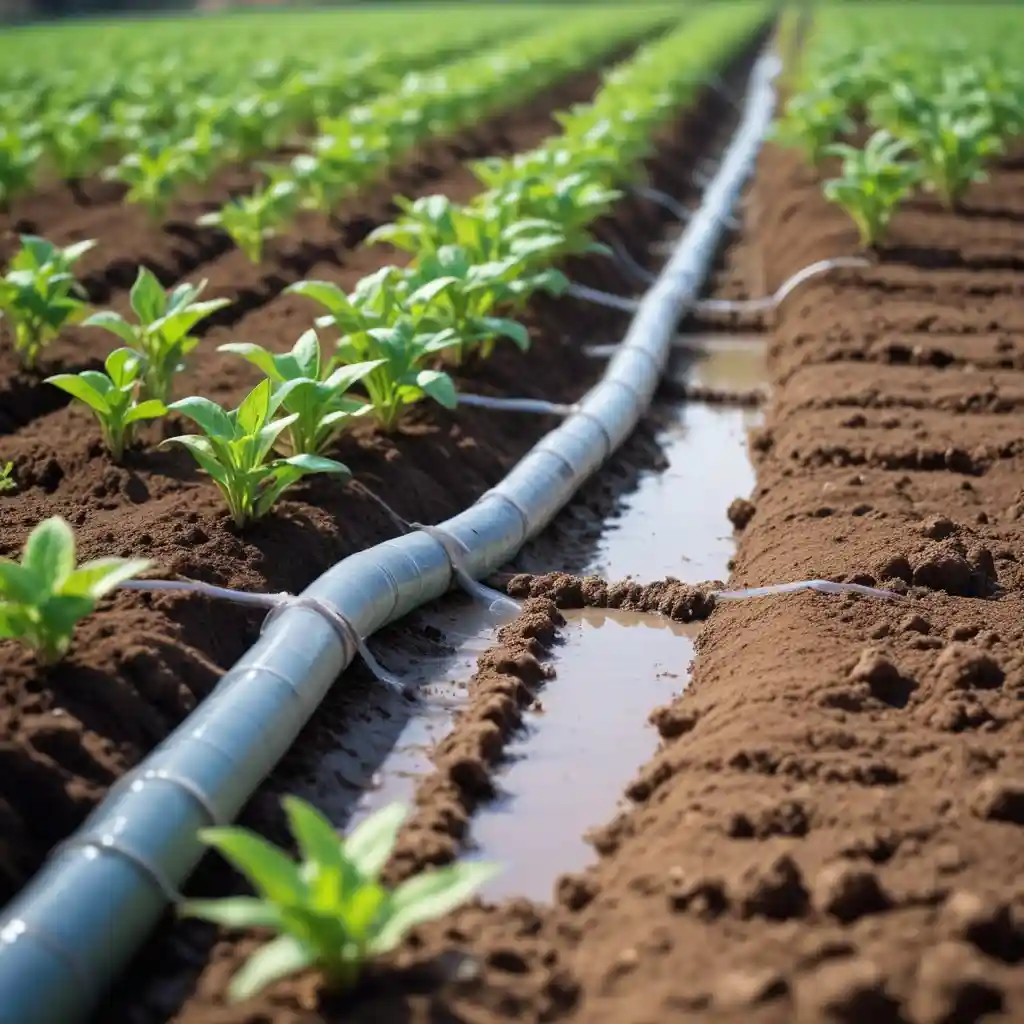
Comparison with traditional irrigation methods
| Aspect | Traditional Irrigation | Subsurface Drip Irrigation (SDI) |
|---|---|---|
| Water distribution | Water is applied over the soil surface, leading to significant evaporation and runoff losses. | Water is delivered directly to the root zone of plants through buried drip lines, minimizing evaporation and runoff. |
| Efficiency | Less efficient due to water loss through evaporation, wind drift, and runoff, resulting in lower overall irrigation efficiency. | Highly efficient, with minimal water loss and maximum utilization of applied water for plant uptake, leading to higher irrigation efficiency. |
| Uniformity | Uneven water distribution may occur, leading to overwatering in some areas and underwatering in others. | Provides uniform water distribution across the irrigated area, ensuring consistent moisture levels and optimal plant growth. |
| Water conservation | Limited water conservation benefits due to inefficiencies in water delivery and utilization. | Offers significant water conservation benefits by reducing water wastage and optimizing water use efficiency. |
Impact on crop water needs
SDI systems can significantly reduce the amount of water required for crop irrigation while maintaining or even increasing crop yields. Studies have shown that SDI can reduce water usage by up to 30% compared to traditional irrigation methods while achieving similar or higher crop yields. This water savings not only helps conserve precious water resources but also reduces irrigation costs for farmers and promotes sustainable agricultural practices.
Environmental benefits
In addition to water savings, SDI systems offer several environmental benefits, including:
- Reduced soil erosion: By minimizing surface runoff and soil disturbance associated with traditional irrigation methods, SDI helps protect soil structure and fertility, reducing erosion and soil loss.
- Preservation of water quality: SDI systems minimize the leaching of nutrients and agrochemicals into groundwater and surface water bodies, helping maintain water quality and ecosystem health.
- Conservation of energy: Since SDI requires less water pumping and distribution compared to traditional irrigation methods, it leads to energy savings and reduces greenhouse gas emissions associated with water pumping and transportation.
Overall, the adoption of SDI systems can contribute to sustainable water management practices, mitigate the impacts of water scarcity, and promote environmental stewardship in agricultural and landscaping sectors. By harnessing the power of targeted water delivery and maximizing irrigation efficiency, SDI helps meet the water needs of crops and landscapes while minimizing the environmental footprint of irrigation activities.
Comparison of Water Savings between Traditional Irrigation and SDI
| Aspect | Traditional Irrigation | Subsurface Drip Irrigation (SDI) |
|---|---|---|
| Water distribution | Over the soil surface, leading to significant evaporation and runoff losses. | Directly to the root zone of plants through buried drip lines, minimizing evaporation and runoff. |
| Efficiency | Less efficient due to water loss through evaporation, wind drift, and runoff. | Highly efficient, with minimal water loss and maximum utilization of applied water for plant uptake. |
| Uniformity | Uneven water distribution may occur, leading to overwatering in some areas and underwatering in others. | Provides uniform water distribution across the irrigated area, ensuring consistent moisture levels. |
| Water conservation | Limited water conservation benefits due to inefficiencies in water delivery and utilization. | Offers significant water conservation benefits by reducing water wastage and optimizing water use efficiency. |
This comparison matrix highlights the key differences between traditional irrigation methods and SDI in terms of water distribution, efficiency, uniformity, and water conservation benefits. SDI emerges as a superior irrigation option for maximizing water savings and promoting sustainable water management practices in agricultural and landscaping applications.
Soil Considerations for Subsurface Drip Irrigation
Before installing an SDI system, it’s essential to consider soil properties such as texture, structure, and permeability. Sandy soils, for example, may require more frequent irrigation to maintain adequate moisture levels, while clay soils may need proper drainage to prevent waterlogging. Conducting a soil analysis and consulting with irrigation experts can help determine the suitability of SDI for specific soil conditions and ensure optimal performance and water efficiency.
Subsurface Irrigation: Is it right to Install in a Lawn?
SDI can also be used for lawn irrigation, offering an efficient alternative to traditional sprinkler systems. By delivering water directly to the root zone, SDI minimizes water waste and promotes healthier turf growth. However, proper installation and maintenance are essential to avoid issues such as emitter clogging or uneven water distribution. Additionally, factors like soil type, lawn size, and water availability should be considered before opting for an SDI system for lawn irrigation.
Frequently Asked Questions: Subsurface Irrigation System
How does an SDI system work?
Subsurface drip irrigation (SDI) systems operate by delivering water directly to the root zones of plants through buried tubes or pipes, known as drip lines. These drip lines are equipped with emitters spaced at regular intervals, which regulate the flow of water to ensure uniform distribution across the irrigated area. The system is typically connected to a water source, such as a well or municipal supply, and controlled by valves, timers, and sensors to optimize irrigation scheduling and water usage. As water is released from the emitters, it infiltrates the soil and reaches the plant roots, promoting efficient water uptake and healthy plant growth.
How do I know if an SDI system is right for my lawn?
Determining the suitability of an SDI system for your lawn involves considering various factors such as soil type, lawn size, water availability, and maintenance requirements. SDI is particularly beneficial for lawns with compacted soils or slopes where traditional sprinkler systems may result in water runoff and uneven coverage. Additionally, SDI can help conserve water and promote healthier turf growth by delivering water directly to the root zone, minimizing evaporation and surface runoff. Consulting with irrigation experts and conducting a site assessment can help determine whether an SDI system is the right choice for your lawn.
How do I choose the right SDI system for my lawn?
Selecting the appropriate SDI system for your lawn involves evaluating factors such as soil conditions, topography, climate, and budget constraints. Considerations include the type of drip lines or pipes, emitter spacing, flow rate, and automation features. For example, if you have sandy soil that requires frequent irrigation, you may opt for drip lines with pressure-compensating emitters to ensure uniform water distribution. Similarly, if you prefer automated irrigation scheduling, you can choose a system with timers and sensors for optimal water management. Consulting with irrigation suppliers or contractors can help you select a system that meets your lawn’s specific needs and requirements.
How do I install an SDI system?
Installing an SDI system involves several steps, starting with site preparation and layout planning. First, determine the location of the water source and main distribution lines, then lay out the drip lines or pipes in the desired pattern across the irrigated area. Next, bury the drip lines at a shallow depth below the soil surface, ensuring proper spacing and alignment with plant rows or landscaping features. Connect the drip lines to the water source and install valves, filters, and control components as needed. Finally, test the system for leaks, adjust emitter flow rates, and program the control system for automated irrigation scheduling. Proper installation is crucial for the efficient operation of an SDI system and should be performed by trained professionals or experienced DIYers.
How do I maintain an SDI system?
Maintaining an SDI system involves regular checks for clogs, leaks, and system malfunctions to ensure optimal performance and water efficiency. Key maintenance tasks include flushing and cleaning emitters to prevent clogging, inspecting pipes and connections for leaks or damage, and replacing worn-out components as needed. Additionally, it’s essential to monitor soil moisture levels and adjust irrigation scheduling based on weather conditions and plant water requirements. Performing routine maintenance during the offseason or downtime can help prevent costly repairs and downtime during the growing season. Consulting with irrigation experts or referring to manufacturer guidelines can provide guidance on proper maintenance procedures for your specific SDI system.
What are some common problems with SDI systems?
Common issues that may arise with SDI systems include emitter clogging, leaks, uneven water distribution, and system malfunctions. Emitter clogging can occur due to sediment or mineral buildup in the water supply, requiring periodic flushing and cleaning to maintain optimal flow rates. Leaks may occur at connection points or along the drip lines, leading to water loss and potential damage to surrounding vegetation. Uneven water distribution can result from improper emitter spacing or pressure variations within the system, necessitating adjustments or replacements. System malfunctions, such as faulty valves or controllers, can disrupt irrigation scheduling and affect plant health. Prompt identification and resolution of these problems are essential to ensure the efficient operation of an SDI system and minimize water wastage.
Where can I find more information about SDI systems?
For more information about SDI systems, you can consult with irrigation suppliers, agricultural extension services, or online resources dedicated to irrigation technology and water management practices. Many manufacturers and industry organizations provide educational materials, instructional videos, and technical support to help users understand the principles of SDI and implement effective irrigation strategies. Additionally, attending workshops, seminars, or conferences on irrigation and water conservation can provide valuable insights and networking opportunities with experts in the field.
Where can Subsurface Irrigation be used?
Subsurface drip irrigation (SDI) can be used in various applications, including agriculture, landscaping, horticulture, and turf management. It is particularly well-suited for crops with shallow root systems, such as vegetables, fruits, and ornamental plants, where precise water delivery is essential for optimal growth and yield. SDI is also beneficial for areas with limited water availability or high evaporation rates, as it minimizes water loss and maximizes irrigation efficiency. In landscaping and turf management, SDI offers an efficient alternative to traditional sprinkler systems, providing uniform water distribution while reducing water waste and runoff. Whether in agricultural fields, orchards, vineyards, or residential lawns, SDI systems can help conserve water resources and promote sustainable irrigation practices for a greener future.
Final Verdict
Subsurface drip irrigation offers numerous benefits, including improved water efficiency, reduced soil erosion, and enhanced plant growth. While initial investment costs and maintenance requirements may pose challenges, the long-term water savings and environmental benefits make SDI a valuable irrigation option for both agricultural and landscaping purposes. By harnessing the power of targeted water delivery, SDI contributes to sustainable water management practices and promotes healthier plant ecosystems for future generations.

